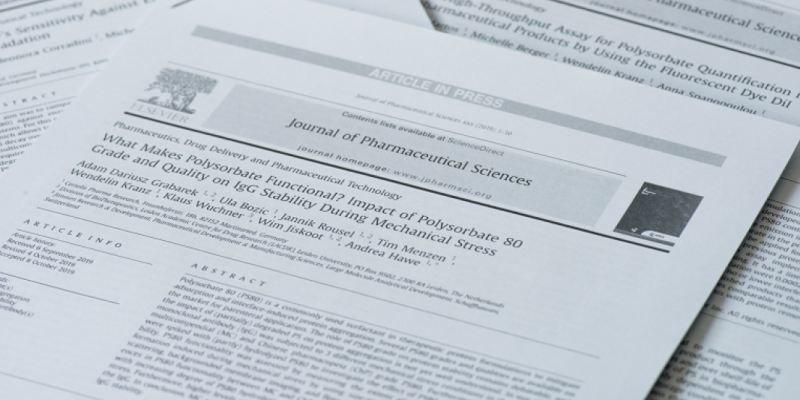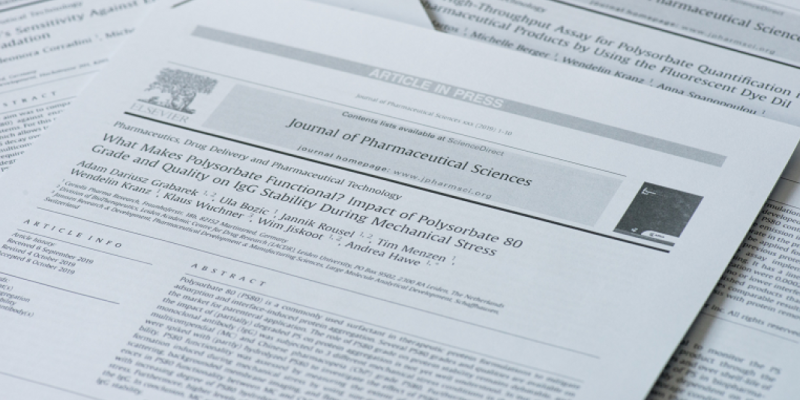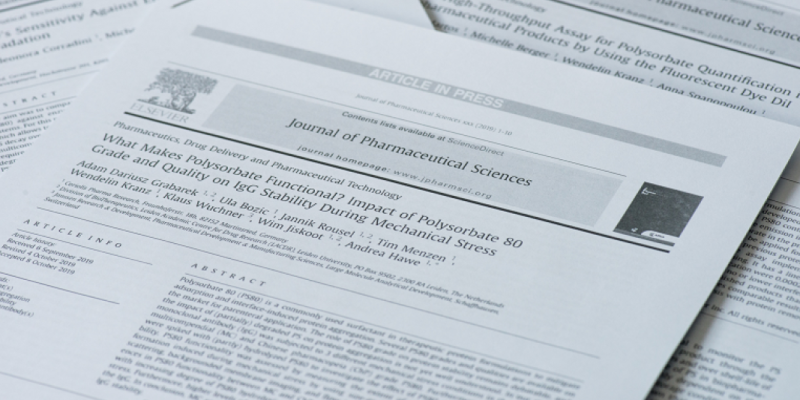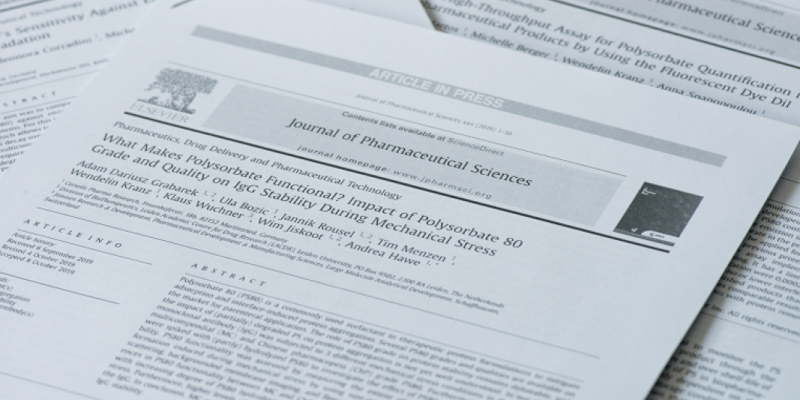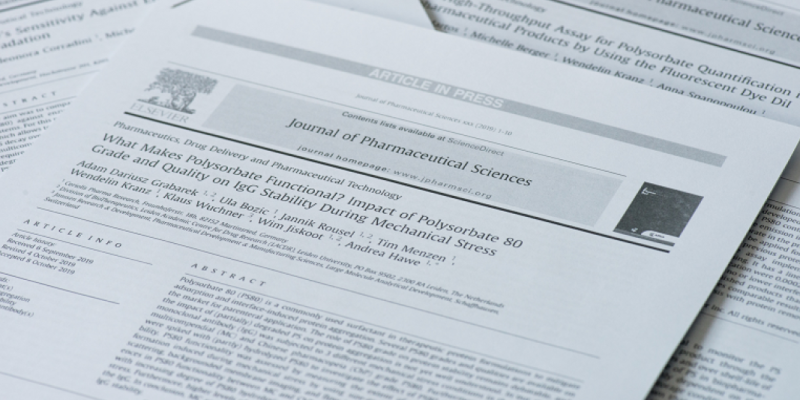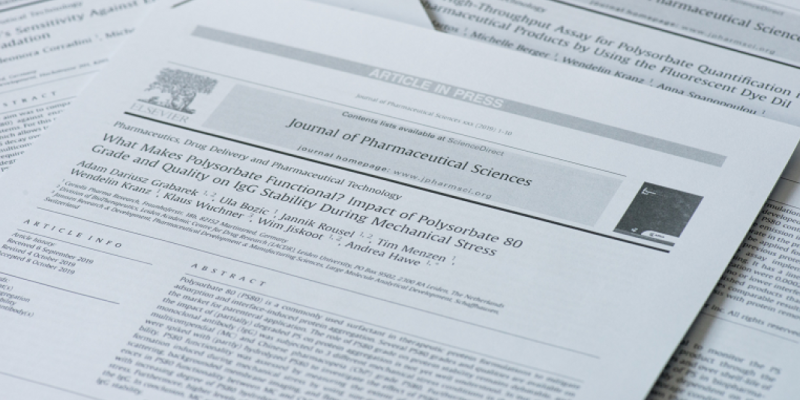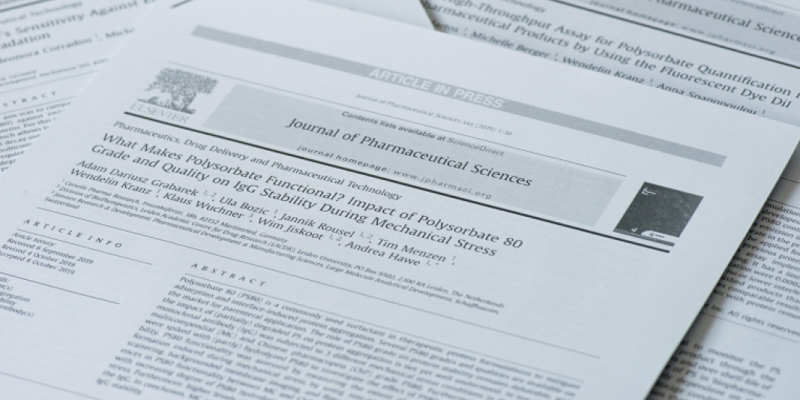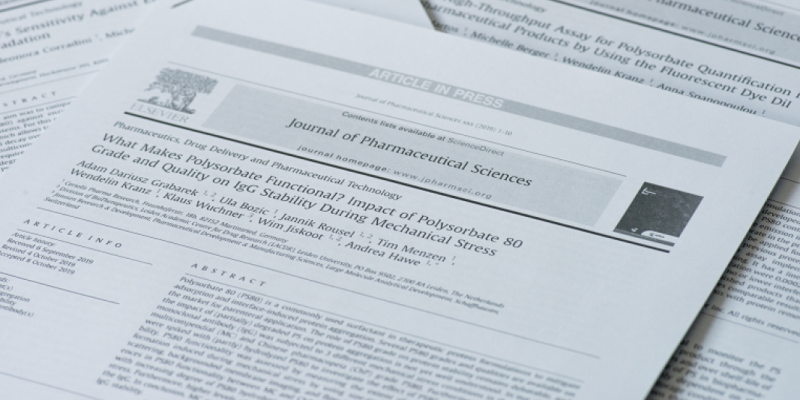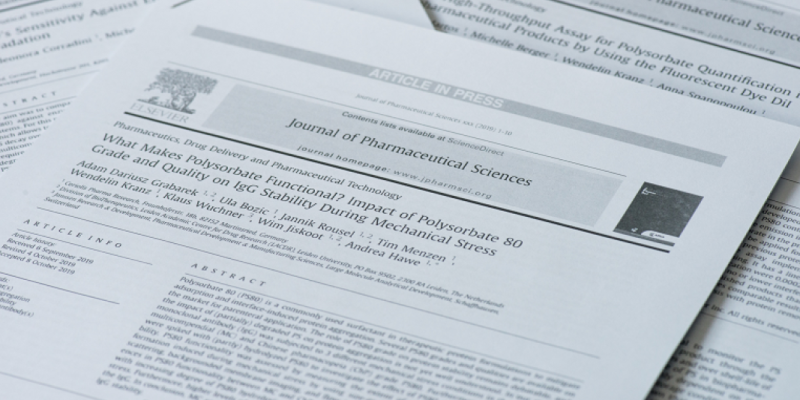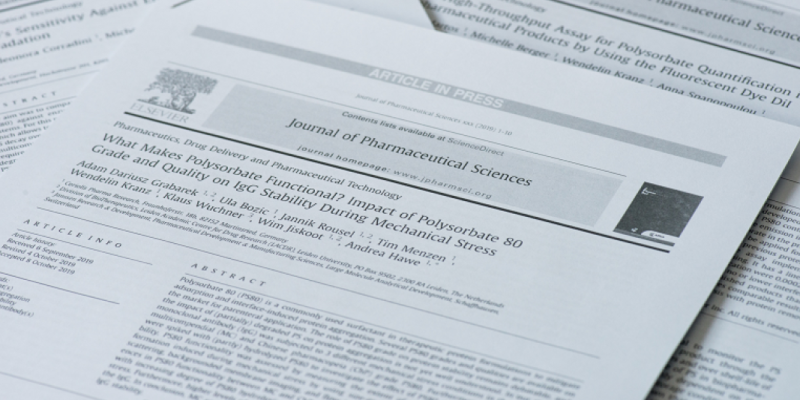Chemical and Biophysical Characteristics of Monoclonal Antibody Solutions Containing Aggregates Formed during Metal Catalyzed Oxidation
Pharm Res. 2017 Dec
PURPOSE: To physicochemically characterize and compare monoclonal antibody (mAb) solutions containing aggregates generated via metal catalyzed oxidation (MCO).
METHODS: Two monoclonal IgG2s (mAb1 and mAb2) and one monoclonal IgG1 (rituximab) were exposed to MCO with the copper/ascorbic acid oxidative system, by using several different methods. The products obtained were characterized by complementary techniques for aggregate and particle analysis (from oligomers to micron sized species), and mass spectrometry methods to determine the residual copper content and chemical modifications of the proteins.
RESULTS: The particle size distribution and the morphology of the protein aggregates generated were similar for all mAbs, independent of the MCO method used. There were differences in both residual copper content and in chemical modification of specific residues, which appear to be dependent on both the protein sequence and the protocol used. All products showed a significant increase in the levels of oxidized His, Trp, and Met residues, with differences in extent of modification and specific amino acid residues modified.
CONCLUSION: The extent of total oxidation and the amino acid residues with the greatest oxidation rate depend on a combination of the MCO method used and the protein sequence.
Pharm Res. 2017 Dec
https://link.springer.com/article/10.1007%2Fs11095-017-2262-8

